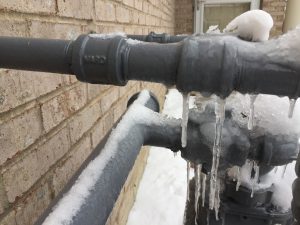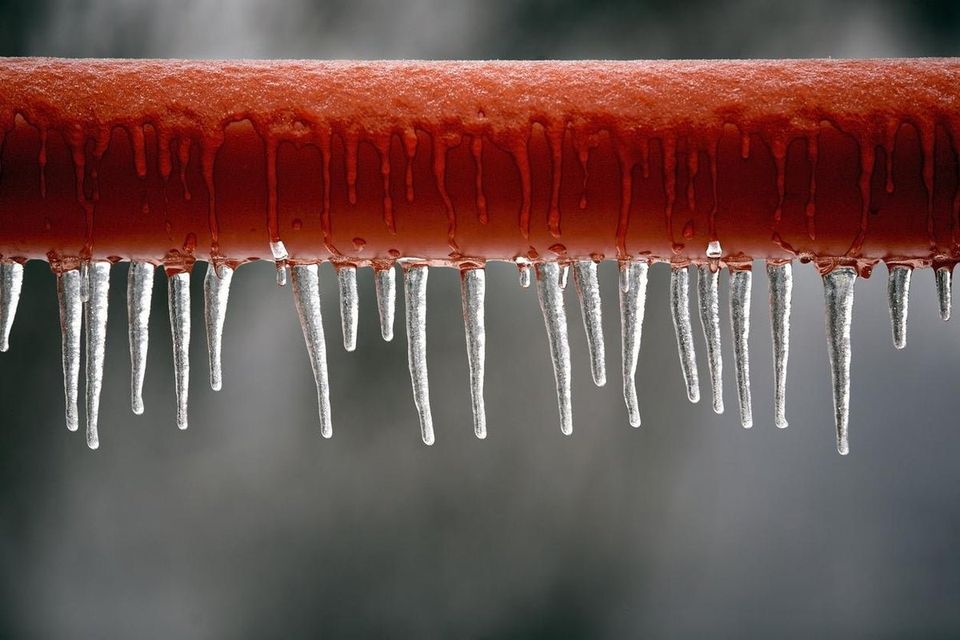Avoiding Frozen Plumbing in Winter: Key Tips
Avoiding Frozen Plumbing in Winter: Key Tips
Blog Article
This great article directly below in relation to 6 Ways to Prevent Frozen Pipes is definitely entertaining. You should keep reading.

Cold weather can ruin your plumbing, specifically by freezing pipes. Right here's exactly how to avoid it from happening and what to do if it does.
Intro
As temperatures decline, the danger of frozen pipelines increases, potentially leading to pricey fixings and water damage. Recognizing how to prevent icy pipelines is vital for home owners in chilly environments.
Prevention Tips
Shielding prone pipes
Wrap pipelines in insulation sleeves or use warm tape to shield them from freezing temperatures. Concentrate on pipes in unheated or external locations of the home.
Heating techniques
Maintain indoor spaces appropriately warmed, specifically locations with pipes. Open up cabinet doors to enable warm air to circulate around pipelines under sinks.
Just how to determine icy pipelines
Search for decreased water circulation from faucets, uncommon smells or noises from pipes, and noticeable frost on exposed pipelines.
Long-Term Solutions
Structural changes
Consider rerouting pipes away from exterior wall surfaces or unheated locations. Add additional insulation to attic rooms, basements, and crawl spaces.
Upgrading insulation
Purchase top quality insulation for pipes, attics, and wall surfaces. Correct insulation helps preserve constant temperature levels and minimizes the danger of icy pipelines.
Securing Exterior Plumbing
Yard pipes and outdoor faucets
Separate and drain pipes yard tubes prior to wintertime. Mount frost-proof faucets or cover outside taps with insulated caps.
Comprehending Frozen Pipes
What causes pipes to ice up?
Pipelines ice up when subjected to temperatures below 32 ° F (0 ° C) for expanded periods. As water inside the pipelines ices up, it broadens, putting pressure on the pipeline walls and potentially creating them to rupture.
Risks and problems
Icy pipes can bring about water system disruptions, residential property damage, and costly repair work. Ruptured pipelines can flooding homes and create comprehensive structural damages.
Signs of Frozen Water Lines
Identifying frozen pipes early can stop them from rupturing.
What to Do If Your Pipes Freeze
Immediate actions to take
If you think frozen pipes, keep taps open up to relieve pressure as the ice melts. Utilize a hairdryer or towels soaked in hot water to thaw pipes gradually.
Verdict
Preventing icy pipelines needs aggressive steps and quick feedbacks. By understanding the causes, indications, and safety nets, homeowners can protect their pipes during cold weather.
5 Ways to Prevent Frozen Pipes
Drain Outdoor Faucets and Disconnect Hoses
First, close the shut-off valve that controls the flow of water in the pipe to your outdoor faucet. Then, head outside to disconnect and drain your hose and open the outdoor faucet to allow the water to completely drain out of the line. Turn off the faucet when done. Finally, head back to the shut-off valve and drain the remaining water inside the pipe into a bucket or container. Additionally, if you have a home irrigation system, you should consider hiring an expert to clear the system of water each year.
Insulate Pipes
One of the best and most cost-effective methods for preventing frozen water pipes is to wrap your pipes with insulation. This is especially important for areas in your home that aren’t exposed to heat, such as an attic. We suggest using foam sleeves, which can typically be found at your local hardware store.
Keep Heat Running at 65
Your pipes are located inside your walls, and the temperature there is much colder than the rest of the house. To prevent your pipes from freezing, The Insurance Information Institute suggests that you keep your home heated to at least 65 degrees, even when traveling. You may want to invest in smart devices that can keep an eye on the temperature in your home while you’re away.
Leave Water Dripping
Moving water — even a small trickle — can prevent ice from forming inside your pipes. When freezing temps are imminent, start a drip of water from all faucets that serve exposed pipes. Leaving a few faucets running will also help relieve pressure inside the pipes and help prevent a rupture if the water inside freezes.
Open Cupboard Doors
Warm your kitchen and bathroom pipes by opening cupboards and vanities. You should also leave your interior doors ajar to help warm air circulate evenly throughout your home.

I was introduced to that write-up on Prevent Frozen Pipes through a pal on a different web address. Do you know anybody else who is sincerely interested in the topic? Please feel free to share it. I love your readership.
Call Today Report this page